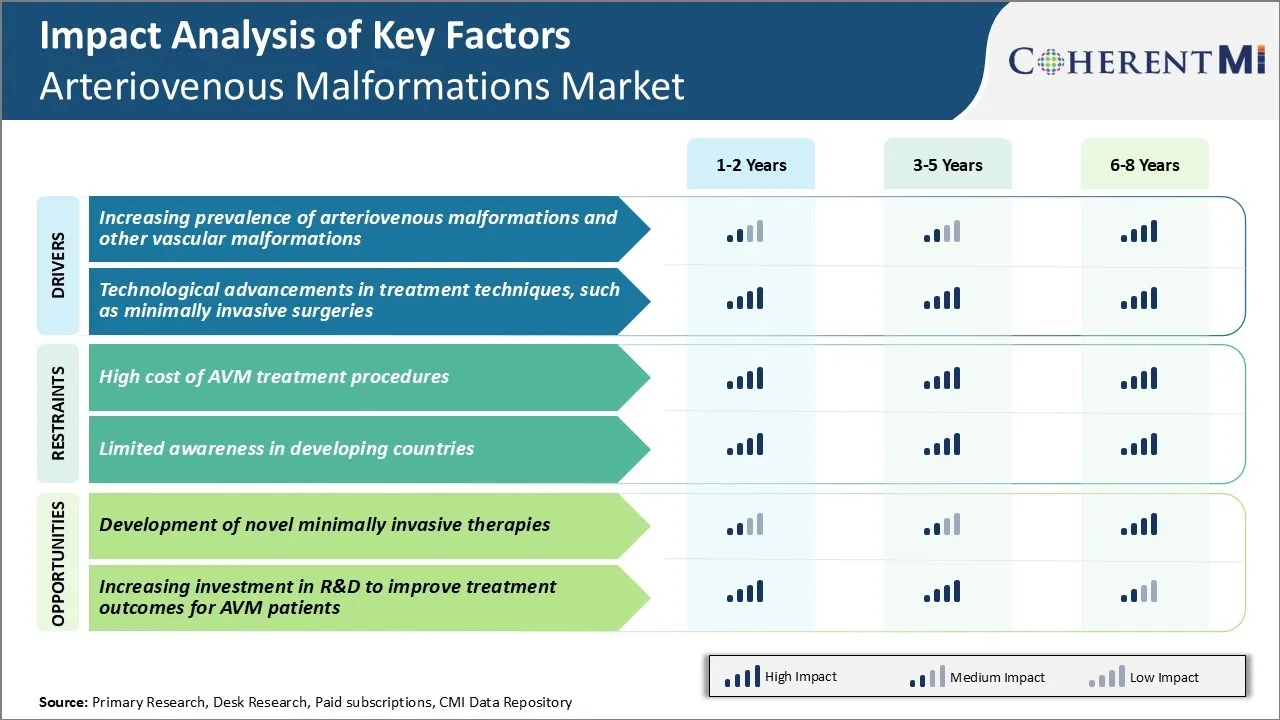Arteriovenous Malformations Market Trends
Market Driver - Increasing Prevalence of Arteriovenous Malformations and Other Vascular Malformations
The increasing number of people being diagnosed with arteriovenous malformations (AVMs) and other vascular anomalies worldwide is presenting a massive market opportunity in this sector. Healthcare experts indicate that around 1-2% of the global population lives with some form of vascular abnormality though a majority remain undiagnosed for long periods.
The high financial and quality of life costs associated with living with untreated AVMs are also driving more patients to actively seek evaluation and treatment. Left unattended, these abnormal connections between arteries and veins in the brain or other parts of the body can cause excruciating headaches, seizures, hemorrhaging or other debilitating symptoms over time. With more individuals experiencing episodes of hemorrhage or progressive neurological deficits, the tendency to delay or ignore symptoms is decreasing. At the same time, shifting social trends where patients are more educated and informed about their health is translating into early detection and management of such conditions.
With prevalence anticipated to continue growing in step with aging populations worldwide, especially in developed nations, this driver will remain a force shaping long term market prospects.
Market Driver - Technological Advancements in Treatment Techniques, such as Minimally Invasive Surgeries
Over the years, significant advances have occurred in the techniques and technologies employed for AVM treatment. The increasing use of minimally invasive endovascular embolization procedures either pre-operatively or as a standalone option represents a major step forward. Such intra-arterial approaches which involve threading catheters into cerebral arteries and injecting embolic materials like liquid polymers, particles or coils to occlude the AVM from within the blood vessel have gained popularity.
Innovations in catheter technology allowing for improved navigation of tortuous cerebral vessels as well as new embolic products claiming higher occlusion rates with just a single treatment have further spurred the adoption of endovascular techniques. Additionally, real-time multi-directional 3D visualization platforms and robotic navigation systems now aid interventional neuroradiologists in meticulously planning treatment strategies and performing even intricate procedures with precision. Newer options like MR-guided focused ultrasound which can non-invasively coagulate targeted regions of the AVM without breaking the blood-brain barrier are also expanding the scope of minimally invasive solutions.
As technology enables enhanced outcomes in a minimally invasive paradigm, the AVM treatment landscape will keep evolving favorably around such innovations and techniques.

Market Challenge - High Cost of AVM Treatment Procedures
One of the major challenges currently being faced in the arteriovenous malformations (AVM) market is the high cost associated with AVM treatment procedures. Treating AVMs often requires complex neurosurgical or radiosurgical procedures that have significant price tags. For example, stereotactic radiosurgery which uses precision-guided radiation to destroy abnormal blood vessels costs between $25,000 to $50,000 per treatment.
Similarly, traditional open brain surgeries for AVM resection average over $100,000 in total procedure costs. These prices do not include any pre-surgical testing, post-surgical follow-up imaging, nursing care or additional treatments that may be required. The financial burden of such expensive procedures is discouraging many patients from undergoing recommended treatment, especially in developing countries with lower reimbursement rates. This is negatively impacting the revenues of product manufacturers and healthcare providers in this market.
In order to improve clinical outcomes and expand access to care, there is an urgent need for more cost-effective treatment alternatives for AVMs.
Market Opportunity - Development of Novel Minimally Invasive Therapies
One of the key opportunities in the AVM market is the development of novel minimally invasive therapies. Currently available treatment options such as neurosurgery and radiosurgery often require general anesthesia and carry risks of complications like neurological deficits. This has driven immense interest in developing less invasive alternatives.
Companies are increasingly investing in therapies involving catheter-based embolization procedures, focused ultrasound ablation techniques and drug-device combination products. These methods can precisely target AVMs under imaging guidance without neurosurgical incisions. They offer potential advantages like shorter hospital stays, faster recovery times and reduced healthcare costs.
As these novel technologies receive regulatory approvals and demonstrate positive patient outcomes, they are expected to drive significant growth in the AVM market. This will provide patients with safer, more tolerable options while opening up new revenue streams for medtech innovators.